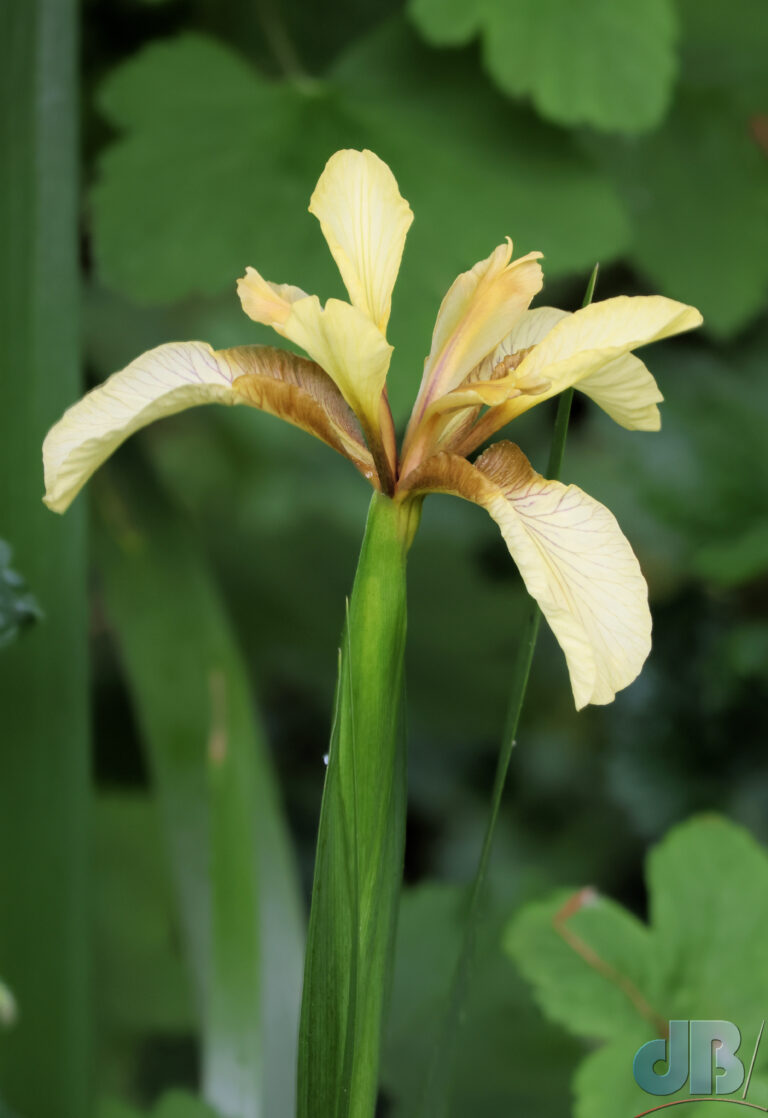In May 2025, I noticed a Stinking Iris, Iris foetidissima, also known as gladdon, Gladwin iris, roast-beef plant, or stinking gladwin. It’s usually found in open woodland, hedgebanks and on sea-cliffs, so it’s very nice of it to turn up growing in our back garden.

I’ve been trying to create “wild” spaces in our garden, front and back, for several years after reinstating the pond as part of a bigger effort to make it more inviting to invertebrates, birds, and other creatures. We don’t have a lot of land, just a couple of hundred square metres of growing space at the back and maybe 150 at the front, at a guess.
The front garden was #NoMowMay for a year or two, but then I saw the light, it’s now #NoMowSummer. After all, there’s little point in allowing plants to grow up through the lawn and attracting invertebrates if you’re then going to kill them all on the first day of June.
Beyond that, I’ve tried Seedballs, with little success, although I do now have lots of Oxeye Daisy, which self seed and so have propagated. But, none of the other promised flowers emerged again, not the Cornflowers nor the Viper’s Bugloss, after the first season. I had Corncockle seed from a friend a while back, which worked in the first season, but harvested seeds didn’t subsequently germinate. The key to growing wildflowers seems to be low-nutrition soil.
We do have lots of red campion, wild mustard plants, wood avens, green alkanet, nettles, dead nettle, self-heal (sometimes), buttercups, dandelion, sorrel, ragwort, common daisy, poppies, wild mint, mallow, foxgloves (at last in 2025), red valerian (great for Hummingbird Hawk-moth), a tiny patch of “butter-and-eggs” (Linaria vulgaris, sometimes known as common, or yellow, toadflax), yarrow, flox, and purple toadflax (L.purpurea). And, a few planted wild herbs (wild oregano, thyme, sage, and St John’s Wort). There are a few other wild species as well as a couple of dozen cultivated plants.
A cherry plum sprang up in the front garden in 2024 and is getting quite tall standing next to our dying mountain ash (rowan). Lots of fennel plants come up through the front lawn and even more common cat’s ear (looks like a lanky dandelion, and is sometimes called false dandelion, it’s great for pollinators).